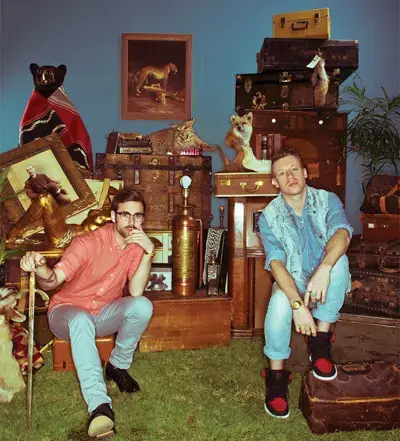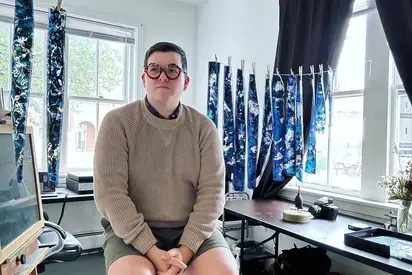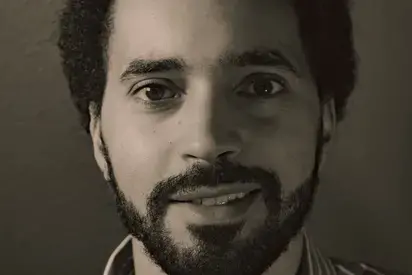
Back in February 2012, The Seattle Times caught the buzz around Ben Haggerty ’09 and proclaimed him “Seattle’s best shot at mainstream stardom right now.”
Before long, this prediction proved true. Within months, Haggerty—the homegrown rapper more commonly known by his stage name Macklemore—and his producer-partner Ryan Lewis released their breakthrough song, “Thrift Shop,” a funny, infectious ode to the thrills of thrifting (”This is...awesome,” raps Macklemore). It rocketed up the iTunes download list and by January, it was No. 1 on the Billboard Hot 100 chart, making the duo the first Seattle artists to reach that spot since 1992, when Sir Mix-a-Lot was there with “Baby Got Back.”
By April, “Thrift Shop” had topped Billboard’s Hot R&B/Hip-Hop Songs for 12 weeks, setting the record for the longest-running No. 1 rap song in the chart's history. In less than eight months, it sold more than 5 million copies and was certified multi-platinum. To date, its YouTube video— which drove the popularity of the song online and on radio—has racked up well over 200 million views, and the debut studio album it’s drawn from, The Heist, became the most downloaded on the U.S. iTunes chart within hours of its release. It sold 78,000 copies in its first week and reached No. 2 on the Billboard 200—without the backing of any record label, advertising or mainstream media.
Last October, Rolling Stone magazine dubbed the artists’ spectacular commercial success an “indie rags-to-riches” story and rated their online marketing as “top-notch,” which it noted, “bodes well for concert-ticket sales.”
Macklemore & Ryan Lewis have performed across North America and Europe, from Seattle’s Bumbershoot festival to New York City’s Bowery Ballroom to Dublin, Ireland (where Haggerty roused the crowds with his tune, “Irish Celebration”), gaining a reputation for their ebullient concerts, audience rap-alongs and flamboyant threads. Their world tour for The Heist has sold out several upcoming shows, including gigs in London in May and July and in St. Gallen, Switzerland in June.
This past March, nearly 6 million viewers watched Haggerty (and the huge, gold-fringed epaulets on his bright red suit) kinetically bouncing across the Saturday Night Live stage, several months after his appearance on The Ellen DeGeneres Show, where he played “Same Love,” his touching anthem for marriage equality (the single’s YouTube video has since eclipsed 31.3 million views).
Afterwards, “Same Love” caused a stir in a middle school in Michigan when a teacher was suspended for playing the song in class at the request of a student—and another student complained about it. On his website, Haggerty weighed in on the incident, saying, “I wrote the song ‘Same Love,’ not with the expectation that it would cure homophobia and lead to marriage equality across the US (although that’d be awesome). It was written with the hope that it would facilitate dialogue and through those conversations understanding and empathy would emerge. This incident demonstrates how too often we are quick to silence conversations that must be had.”
A hip-hop fan since childhood, Haggerty began writing lyrics at 14, when he was known as Möcklimore, the nickname his buddies gave him. That evolved into Professor Macklemore, the name under which he released his first EP, “Open Your Eyes,” in 2000.
As an undergraduate, Haggerty (who had by then dropped the “Professor”) reached a younger generation by facilitating music workshops at the Green Hill School, a maximum-security juvenile detention facility in Chehalis, Wash., where he worked in Evergreen’s Gateways for Incarcerated Youth program.
“It gave me a lot to write about, being around youth who were incarcerated. It gave me a broader perspective on our country’s prison system and judicial system, and exposed me to a lot of amazing individuals who were locked up since they were 12 or 13 years old,” he told an interviewer from the Seattleite news website. “Green Hill is where, as the system would call it, the ‘worst of the worst’ type of kids lived. However, it’s completely not that—they were incredible kids who just got caught up in other things. It was an intense experience and it gave me a lot to reflect on in my life.”
Because his music has dealt with such issues as gay rights, addiction (“Otherside,” 2010; “Starting Over,” 2012), consumerism (“Wing$,” 2011) and racism (“White Privilege,” 2005), Haggerty’s been pigeonholed in the subgenres of alternative, underground, and conscious rap. But he rejects being “put in a box,” saying, “I make rap music. My intention was to make music that spoke to people— and not like 40 people, like hundreds and thousands if not millions of people who could connect with what I’m writing about.”
Music is my creative outlet in terms of expressing what’s important to me...
It comes down to this, the 29-year-old says: “Music is my creative outlet in terms of expressing what’s important to me, what has value, and I want to be respected for that.” He’s written thoughtfully not only about controversial issues, but also about the things he loves, like baseball (“My Oh My,” his 2010 tribute to the Mariners’ late announcer Dave Niehaus, which he and Lewis performed at the Mariners 2011 home opener) and his community (“The Town,” 2009).
Haggerty’s collaboration with Lewis began in 2010, and they’ve since forged a partnership that has struck a chord with millions of fans. Their hits have quickly been parodied, imitated, and employed as themes for special events and contests, like the “Macklemore Thrift Shop Challenge” issued by a popular blog called “Young House Love.” It asked readers to visit a thrift store with “$20 in your pocket” and find at least one item referenced in the song (examples: gator shoes, a velour jumpsuit, a brown leather jacket, a keyboard, a kneeboard, luggage, flannel zebra jammies, a telescope, a big ass coat). Already, eBay is selling thousands of Macklemore items, including plenty claiming to be authentically autographed.
A do-it-yourselfer to the core, Haggerty has remained independent from the beginning, producing one mixtape, two albums and three EPs over the past 13 years. He considers his art to be completely his own business and he’s purposefully held on to his brand to maintain creative control. He’s involved in every detail from writing the lyrics and melodies to delivering the message through merchandising, picking out wardrobes, video production, truck driving and distribution. He’s built his craft and his following through dedication, hard work, sacrifice and smarts—oh, and an annual fan appreciation pizza party he hosts.
His stardom has been organically cultivated. As he told Jabari Johnson, the creator of the documentary Jabari presents: Macklemore & Ryan Lewis, “It was grassroots. Wasn’t big money behind it, wasn’t a label, wasn’t a cosign. It was just hard work and people connecting with the music, and that’s the dopest thing.” He alluded to the critics who’ve inevitably cropped up since he’s achieved prominence, declaring, “Say whatever you want…But you can’t take away the fact that there are x amount of people that believe in what I do, passionately. And that’s better than any cosign, that’s better than any signing bonus, that’s better than any label, and that’s why I got there.”




